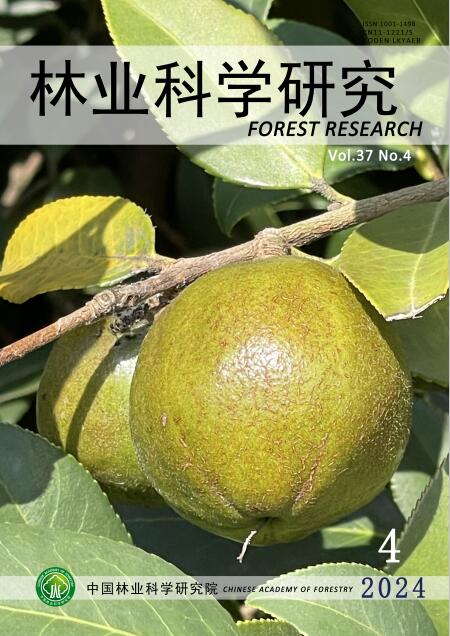Induced Systemic Resistance Triggered by Clonostachys rosea Against Fusarium circinatum in Pinus radiata
Q4 Agricultural and Biological Sciences
引用次数: 7
Abstract
Clonostachys rosea (teleomorph Bionectria ochrouleuca) is a powerful biological control agent (BCA), and has been categorized as a broad-spectrum agent against several phytopathogens affecting different crops and forest species. One possible way by which C. rosea can reduce the disease incidence is the Induced Systemic Resistance (ISR), an event associated to several biochemical changes conditioning plants to resist the attack of pathogens. Several studies have found that C. rosea induces resistance against pathogens in legumes, cereals and other crops, but there is a lack of information about the situation in forest species. Therefore, the main goal of this study was to evaluate the behavior of different C. rosea strains as inductors of resistance against the pathogen Fusarium circinatum Niremberg and O`Donnell in two contrasting genotypes of Pinus radiata D. Don. Ten C. rosea strains were applied to the substrate at 8 and 1 days before confronting P. radiata plants with F. circinatum, which was inoculated into 5 μL droplets at a previously cut shoot. The lesion length produced by the pathogen was measured at 60 days post inoculation. It was found that only the resistant P. radiata genotype showed evidence of ISR, with two C. rosea strains, Cr7 and Cr8, triggering resistance and decreasing lesion length to 48.7% and 47.4%, respectively, when compared to pathogen control. These results demonstrate the potential of some C. rosea strains to produce ISR on P. radiata, but at least for this particular pathosystem, this protection appears to be both dependent on the genotype of the host and the inducer C. rosea strain. This is the first report indicating that C. rosea can act as an inducer of resistance on the P. radiate-F. circinatum pathosystem.刺槐对刺槐镰刀菌诱导的全身抗性
摘要玫瑰克隆病菌(Clonostachys rochrouleuca)是一种强效生物防治剂(BCA),是一种广谱防治多种植物病原菌的生物防治剂。一种可能的方法是诱导系统抗性(ISR),这是一种与几种生化变化有关的事件,使植物能够抵抗病原体的攻击。几项研究发现,在豆类、谷物和其他作物中,玫瑰念珠菌诱导对病原体的抗性,但在森林物种中缺乏有关情况的信息。因此,本研究的主要目的是评价不同玫瑰红梭菌菌株作为两种不同基因型辐射松(Pinus radiata D. Don)对Niremberg和O 'Donnell镰刀菌(Fusarium circinatum Niremberg)抗性诱变剂的行为。将10株玫瑰红孢菌分别于辐射假单胞菌与环纹假单胞菌接触前8天和1天接种于底物上,并将环纹假单胞菌接种于先前扦插的5 μL液滴中。接种后60天测定病原菌产生的损伤长度。结果发现,只有耐药的辐射假单胞菌基因型表现出ISR,与对照相比,2株玫瑰假单胞菌Cr7和Cr8分别诱发了抗性和损伤长度的减少,分别为48.7%和47.4%。这些结果表明,一些玫瑰红孢杆菌菌株对辐射假单胞菌产生ISR的潜力,但至少对于这种特殊的病理系统,这种保护似乎既依赖于宿主的基因型,也依赖于诱导剂玫瑰红孢杆菌菌株。这是第一次有报道表明玫瑰红曲霉可以作为病原菌的抗性诱导剂。circinatum pathosystem。
本文章由计算机程序翻译,如有差异,请以英文原文为准。
求助全文
约1分钟内获得全文
求助全文
来源期刊

林业科学研究
Environmental Science-Ecology
CiteScore
0.90
自引率
0.00%
发文量
4834
期刊介绍:
Forestry Research is a comprehensive academic journal of forestry science organized by the Chinese Academy of Forestry. The main task is to reflect the latest research results, academic papers and research reports, scientific and technological developments and information on forestry science mainly organized by the Chinese Academy of Forestry, to promote academic exchanges at home and abroad, to carry out academic discussions, to flourish forestry science, and to better serve China's forestry construction.
The main contents are: forest seeds, seedling afforestation, forest plants, forest genetic breeding, tree physiology and biochemistry, forest insects, resource insects, forest pathology, forest microorganisms, forest birds and animals, forest soil, forest ecology, forest management, forest manager, forestry remote sensing, forestry biotechnology and other new technologies, new methods, and to increase the development strategy of forestry, the trend of development of disciplines, technology policies and strategies, etc., and to increase the forestry development strategy, the trend of development of disciplines, technology policies and strategies. It is suitable for scientists and technicians of forestry and related disciplines, teachers and students of colleges and universities, leaders and managers, and grassroots forestry workers.
 求助内容:
求助内容: 应助结果提醒方式:
应助结果提醒方式:


